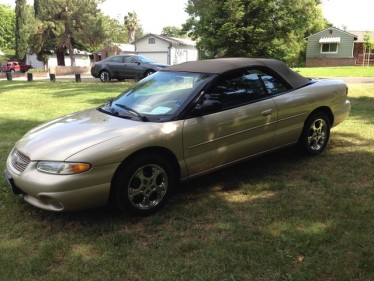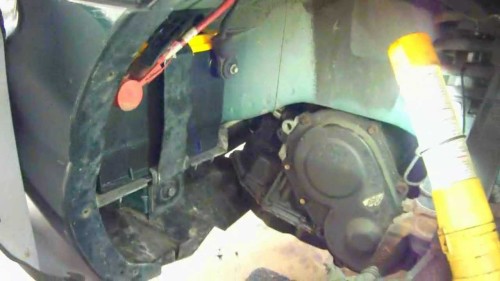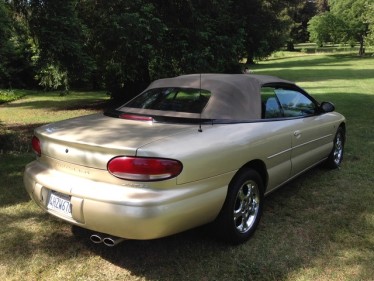Zen and the Art of Battery Replacement

It is unseasonably crisp again this morning. The humidity slid back a bit yesterday, but the skies have cleared and it is cool for an August. There was no reason not to take the Bluesmobile to the dealer for the 90K Platinum servicing.
I wondered what the $700 surprise was going to be this month, and now I know.
I was going to talk to you about the Golden Era of auto ownership this morning, the string of fine German automobiles that marked my automotive interests this last decade, but that brought me around to the curious placement of the battery in the engine compartment of the 1999 Sebring convertible by the engineering staff at Chrysler.
I liked that car- though it was a compromise in many respects. It had to accommodate two sets of golf clubs in the trunk, four large humans in the passenger compartment, and enough performance to survive the lunatics on the Capital Beltway. In its defense, it looked nice, was fairly peppy, and the top came down just fine and allowed the breeze to move my hair despite the still-military obligation to keep it short.
I had given the late-model champagne-colored ragtop to my older son when he graduated from college. While perfectly serviceable, there are components that have regular shelf-lives, and the battery had to be replaced. He was living not far away in Arlington, and after trudging up from the Mr. Tire on Fairfax Drive with the heavy dead-weight, he called to tell me he couldn’t figure out where the battery went.

I confess I was taken aback. At a minimum, it is my opinion that all motorists ought to be required to swap out a battery and change a tire, so I assured him it was simple, and if he could get to work the next day I would swing by and take care of it. I was baffled that something so simple eluded his skills, and I blamed myself for being a Bad Dad and not teaching him something so simple.
It was not until I went online to find the shop manual for the Sebring that I realized the magnitude of the problem. The engineers had managed to create the sleek lines of the hood and front end by placing access to the battery- get this- inside the left front wheel well.
No kidding. That meant that the car had to jacked up, the tire removed, and an access plate unscrewed to reveal the dead battery. I don’t like having any car up on the jack, and try to minimize the amount of time my fragile body is exposed to the risk of having the automobile crash down on hands or head.

This was much worse. Once the tire and wheel were off the car, I had to get inside the well and start unscrewing the panel. Once removed, I then had to disconnect the cables and horse the heavy lead rectangle off the steel shelf before replacing it, all while trying to avoid bumping the car enough to cause the jack to collapse.
It would be easy if it were on the lift at the garage, but that was clearly not in the shade-tree mechanic’s handbook. In order to ensure that the whole process did not have to be repeated in case I goofed, I hooked the new battery up and put the tire back on the hub with a couple lug nuts, just in case getting behind the wheel shifted the weight enough to knock it off the jack.
It turned over just fine, so then there was the dismount, the removal of the tire- again- replace the access door and the fasteners, re-connect the battery hold-down and replace the battery heater blanket.
I got it all put back together, and then jacked the front end back down once I had the tire and lugs back on the car, tightening them in the star pattern Dad had taught me until everything was torqued up just right.
Damn, I thought, standing up on my aching left leg. That was really stupid.
If I am going to look at that new Dodge Challenger Hellcat, I am going to check where the battery is located before I get out my check-book. If it is in the wheel-well, I am going to keep looking and I don’t care how fast it can go from zero to sixty.

Copyright 2014 Vic Socotra
www.vicsocotra.com
Twitter: @jayare303
